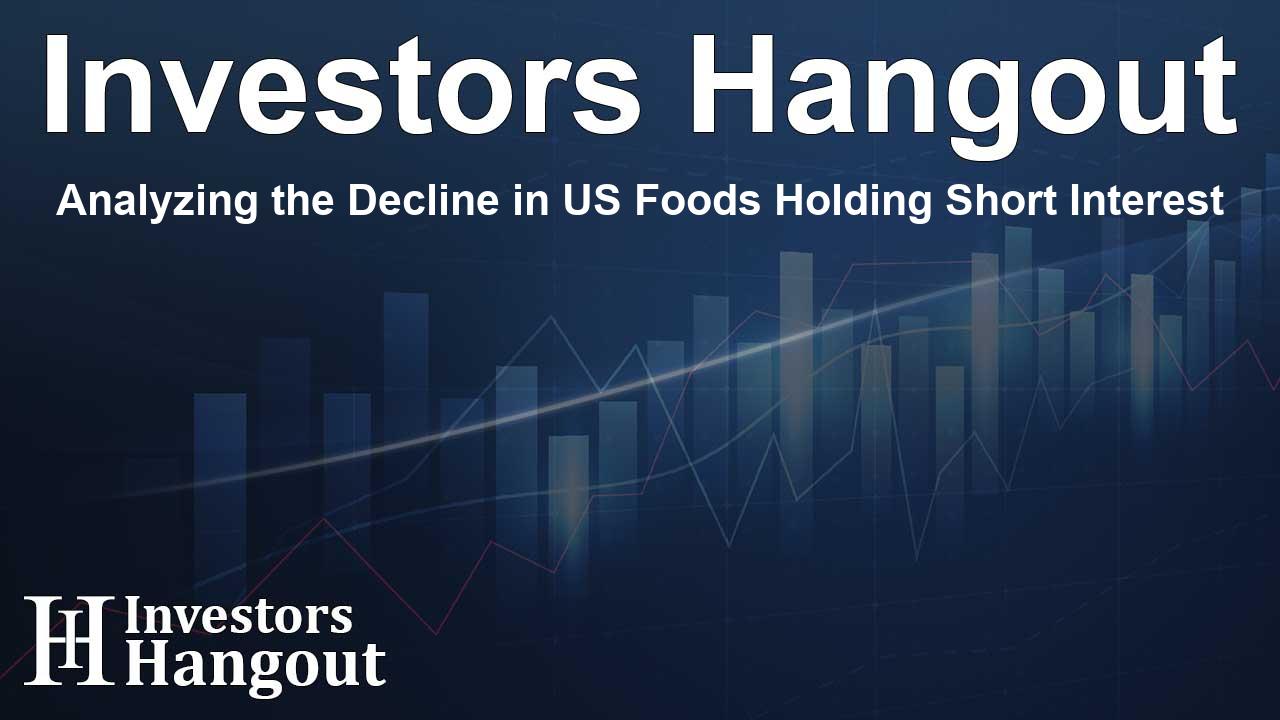Analyzing the Decline in US Foods Holding Short Interest

Understanding Short Interest and Its Significance
US Foods Holding (NYSE: USFD) has recently shown a notable change in short interest, with the short percent of float declining by 9.27% since the last report. The company currently has approximately 4.32 million shares sold short, representing 1.86% of its overall shares available for trading. This statistic indicates that, based on the average trading volume, it would take about 2.06 days for traders to cover their short positions.
What is Short Interest?
Short interest refers to the total number of shares sold short but not yet covered by the traders. Short selling involves the selling of shares the trader does not own, with the anticipation that the price will decrease. If the stock price declines, the trader can buy back the shares at a lower price, thereby earning a profit. However, if the price increases, the trader incurs losses.
Monitoring short interest is crucial as it can serve as a barometer for market sentiment regarding a specific stock. A rise in short interest may suggest that investors are becoming increasingly pessimistic, while a decrease could imply growing optimism about the stock's performance.
Current Trends in US Foods Holding
The recent data shows a declining trend in the proportion of US Foods Holding's shares sold short. Although this drop in short interest does not automatically guarantee a price increase for the stock in the near future, it does indicate that fewer traders are betting against the stock, which can be seen as a positive signal.
Chart Analysis of Short Interest Over Time
The short interest chart for US Foods Holding illustrates the gradual decrease in the percentage of shares sold short over the past three months. This shift is noteworthy for potential investors and traders who need to be aware of changing dynamics in short selling, which can indicate the changing perception of the company.
Comparing US Foods Holding to Industry Peers
One effective strategy analysts and investors use is to compare a company’s performance with its peers. A peer is typically defined as a company within the same industry that shares similar characteristics—size, age, financial structure, etc. Such comparisons help gauge overall competitiveness and market standing.
Industry analyses reveal that US Foods Holding's peer group has an average short interest as a percentage of float at 4.53%. This positions US Foods Holding as having significantly lower short interest than many of its counterparts, indicating greater investor confidence compared to competitors.
The Implications of Short Interest
An increase in short interest is not always a negative signal. In some instances, rising short interest can be seen as bullish for a stock, especially if there is a potential for a short squeeze. This occurs when a heavily shorted stock begins to rise in price, forcing short sellers to buy shares to cover their positions, thus driving the price even higher.
Conclusion
In summary, US Foods Holding is currently experiencing a noteworthy reduction in short interest, putting it in a favorable light compared to its peers in the industry. As potential investors consider their options, staying informed on short interest trends is essential as they can provide valuable insights into market sentiment and investor confidence.
Frequently Asked Questions
What does a decrease in short interest indicate?
A decrease in short interest typically signals that fewer investors are betting against the stock, which can imply a more optimistic outlook on the company’s performance.
How does short selling work?
Short selling involves borrowing shares and selling them at the current market price, with the hope of buying them back later at a lower price to return to the lender, resulting in a profit if successful.
What might it mean if short interest is high?
A high short interest may suggest that a significant number of investors are bearish on the stock, anticipating its value will decline. This can also lead to potential short squeeze situations if the stock price unexpectedly rises.
Why is it important to monitor short interest?
Monitoring short interest helps investors gauge market sentiment toward a stock, which can influence investment decisions and strategies based on perceived risks and opportunities.
How does US Foods Holding compare to its peers?
US Foods Holding has a lower short interest ratio compared to its peers, indicating more confidence among investors relative to others in the same industry.
About Investors Hangout
Investors Hangout is a leading online stock forum for financial discussion and learning, offering a wide range of free tools and resources. It draws in traders of all levels, who exchange market knowledge, investigate trading tactics, and keep an eye on industry developments in real time. Featuring financial articles, stock message boards, quotes, charts, company profiles, and live news updates. Through cooperative learning and a wealth of informational resources, it helps users from novices creating their first portfolios to experts honing their techniques. Join Investors Hangout today: https://investorshangout.com/
Disclaimer: The content of this article is solely for general informational purposes only; it does not represent legal, financial, or investment advice. Investors Hangout does not offer financial advice; the author is not a licensed financial advisor. Consult a qualified advisor before making any financial or investment decisions based on this article. The author's interpretation of publicly available data shapes the opinions presented here; as a result, they should not be taken as advice to purchase, sell, or hold any securities mentioned or any other investments. The author does not guarantee the accuracy, completeness, or timeliness of any material, providing it "as is." Information and market conditions may change; past performance is not indicative of future outcomes. If any of the material offered here is inaccurate, please contact us for corrections.